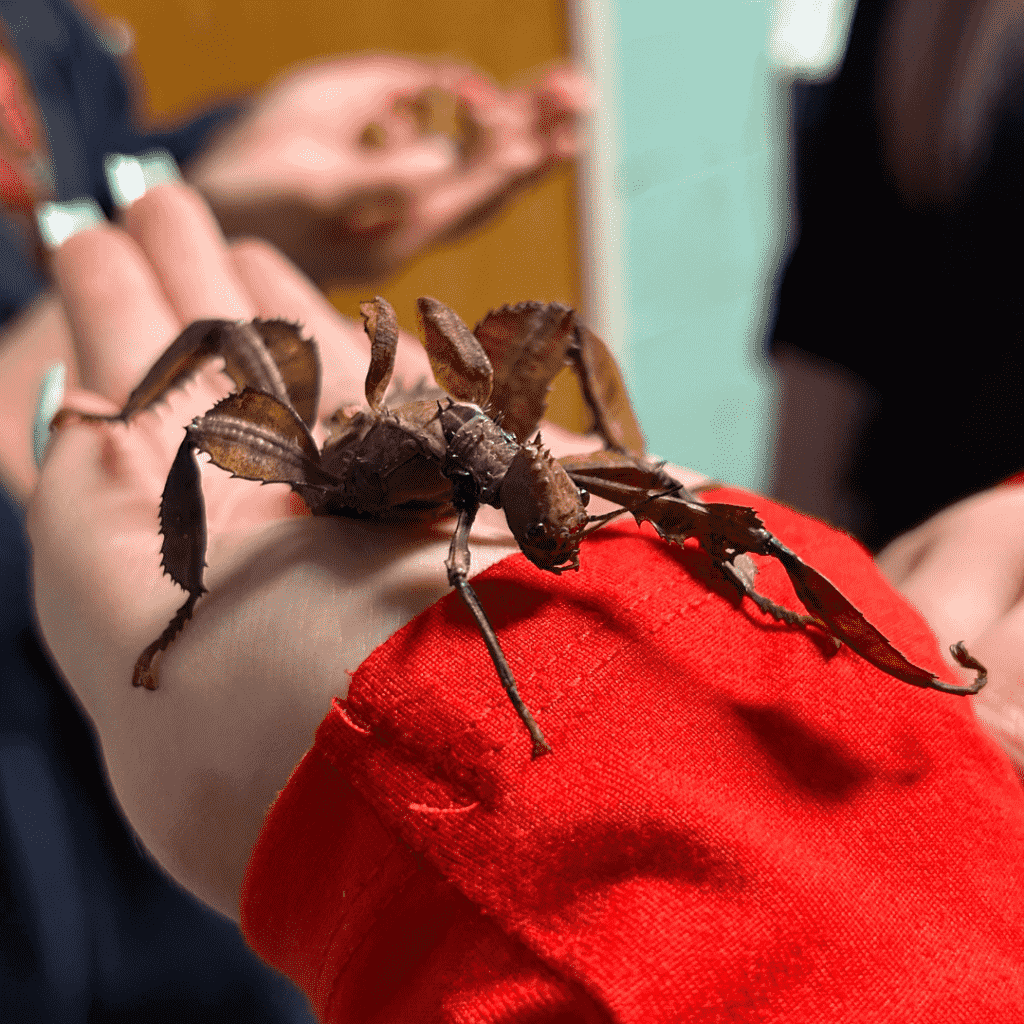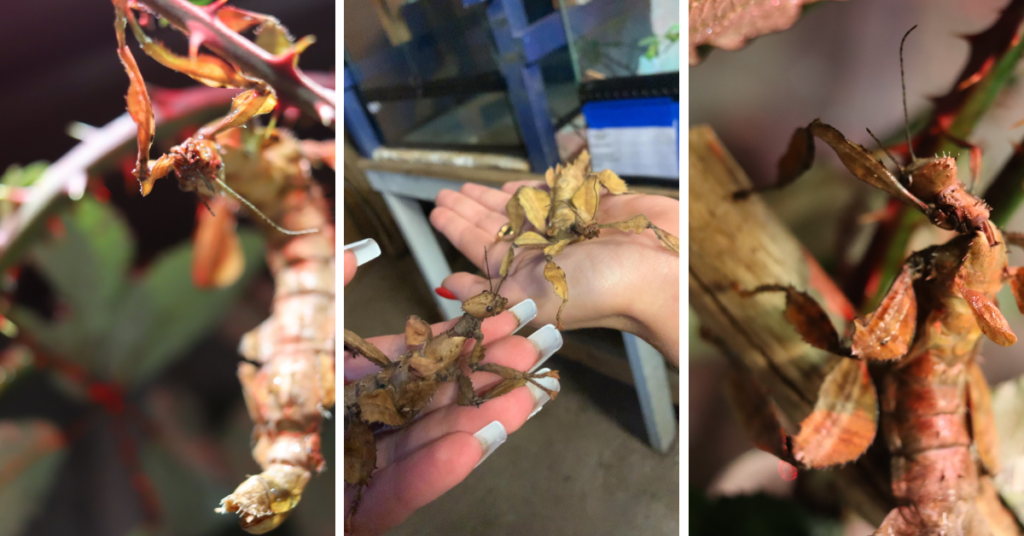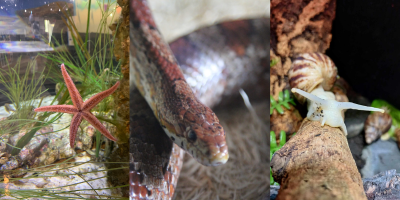Macleays Spectre Stick Insects (Extatosoma Tiaratum)
We host creature encounters twice a day where you can meet Starfish, Snakes, Snails and now…STICK INSECTS.
Extatosoma tiaratum, commonly known as the spiny leaf insect, the giant prickly stick insect, Macleay’s spectre or the Australian walking stick.
Known for their mimicry, these guys are leaf and stick looking, which helps camouflage them.
They’re also known for exhibiting scorpion-like shaping, to warn off enemies.
These lovely creatures could be apart of the next creature encounter you attend. Find out What’s On here.

Learn more about Stick Insects before your visit?
An Australian species of stick insect found in Eucalyptus forests this is one of the larger species of stick insects. The females have been known to reach an adult size of 20cm (8inc). The females are wingless only having small buds, whereas the males are fully winged and able to fly. The males are smaller than the females averaging 11cm (4.5 inc) Both sexes can range from light to medium brown, or a greenish colour. The females have lots of sharp spikes all over the body, but the males seem to be rather smooth.
Females are parthenogenetic, meaning that they do not need to mate with a male to reproduce. An unmated female will still lay viable eggs, which will hatch out only female offspring which are a clone of the mother. Eggs from mated females will hatch out a mixture of both male and female offspring, sharing the DNA of both parents.
The eggs of this species can take from 4 months if mating has been successful or up to 9 months if parthenogenesis (none mated females). Newly hatched nymphs are ant mimics and resemble the insects in whose nest they are born. Their aposematic pattern -orange head, white collar, the rest black-mimics the ant genus Leptomyrmex and makes them appear toxic. Although most adult stick insects are notoriously slow, these nymphs are speedy, active, and quickly make their way to the trees. Their locomotion slows when they moult into their second and subsequent instars. Females acquire their distinctive spiky appearance through additional moults.
When a stick insect is due to moult it will usually climb up to the top of the enclosure or find a leaf to hang upside down from. It will then push its way out from its old skin and proceed to eat it. It is important to make sure that the enclosure is humid and that you do not touch or disturb your insect during this vulnerable time. Occasionally a stick insect may lose a leg whilst moulting, this usually doesn’t cause the stick insect any harm and they will carry on fine without it. If the leg is lost whilst the insect is young, it can fully regenerate a new limb with successful subsequent moults.
Eucalyptus is a natural food source for Macleays spectre stick insects as they naturally inhabit eucalyptus forests. It fills them up as it is a tougher leaf than the likes of bramble etc. They can have quite an insatiable appetite as adults, especially once they begin laying eggs. However not everyone has eucalyptus readily available in their garden so Bramble, Hypericum, Rose, Oak, Blackberry, Raspberry and Hazel will all make perfect substitutes.
Both sexes, when threatened, adopt a threat pose, standing on the front and middle legs, pointing their abdomen up or to the side in a sort of “scorpion” pose. They fold back their legs to defend themselves if anything comes in contact with their abdomen; the pincer movement with the sharp spines on the rear legs can puncture human skin. Adults make clicking sounds and can release a defensive odor reminiscent of toffee. Males may attempt to startle predators by flashing their wings open.
Macleay’s Stick Insects make use of both passive and active camouflage. They adopt a curved pose when hanging upside down amongst foliage with its highly procryptic abdomen curled over its back. Individuals vary in colour and can appear brown, mottled brown, green, reddish, cream, yellowish, or entirely white depending on many factors such as light, diet and surrounding foliage. When surrounded with bright green moss from their first moult, these stick insects will mimic their surroundings and grow into adult hood a bright green colour accompanied with areas of black. Like many stick insects, they actively sway back and forth or side to side when disturbed, or when there is a gust of wind. This action mimics foliage/leaves rustling in the wind.

Other Creatures you may encounter…

